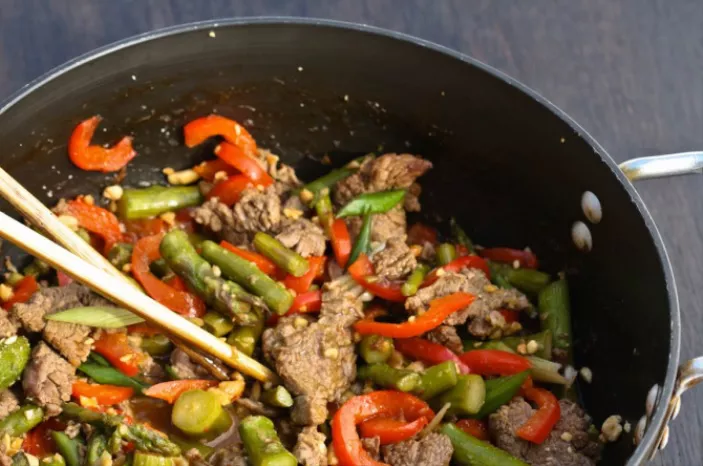Steamed chicken, a staple in Chinese cuisine, is renowned for its tender, succulent, and flavorful qualities. Chinese-style steaming is an art that has been perfected over generations, resulting in a dish that’s both healthy and delicious. In this comprehensive guide, we will walk you through the process of preparing Chinese-style steamed chicken, from selecting the right ingredients to mastering the technique and creating a savory and satisfying meal.
Choosing the Right Chicken
The foundation of a perfect Chinese-style steamed chicken dish begins with selecting the right chicken. While you can use whole chicken or specific parts, such as chicken thighs or drumsticks, for this recipe, it’s crucial to choose fresh, high-quality poultry. Look for chicken that is plump, with smooth and unblemished skin. If possible, opt for free-range or organic chicken for a superior flavor and texture.
Preparing the Chicken
Once you have chosen your chicken, it’s time to prepare it for the steaming process. Start by rinsing the chicken thoroughly under cold water and patting it dry with paper towels. Remove any excess moisture to ensure the chicken steams properly. Next, remove any remaining feathers or quills, and trim any excess fat. For an authentic Chinese touch, you can leave the head and feet intact, but this is optional.
Marinating the Chicken
Marinating the chicken is a crucial step in infusing it with flavor. Chinese-style steamed chicken typically calls for a simple yet aromatic marinade. The basic marinade often consists of ingredients such as soy sauce, Shaoxing wine (a Chinese cooking wine), ginger, and sometimes a touch of sugar. You can adjust the quantities of these ingredients to suit your taste. Let the chicken marinate for at least 30 minutes, though marinating overnight in the refrigerator can result in even more flavor.
Preparing the Steam Setup
To achieve the signature tender and succulent texture of Chinese-style steamed chicken, you’ll need a proper steaming setup. A bamboo steamer is a traditional choice, but a metal or electric steamer will also work effectively. Fill the bottom of your steamer with water and bring it to a gentle boil. Ensure there’s enough water to steam the chicken without the risk of it drying out during the process.
Creating a Flavorful Bed
To add depth and complexity to your Chinese-style steamed chicken, consider creating a flavorful bed for the chicken to rest on during the steaming process. Place slices of fresh ginger, green onions, or herbs like cilantro or parsley on the steaming tray or plate. These aromatics will infuse the chicken with their essence as it cooks.
Placing the Chicken for Steaming
Lay the marinated chicken on the prepared steaming tray or plate over the aromatic bed. To ensure even cooking, try to arrange the chicken pieces so that they do not overlap. The goal is to allow steam to circulate around each piece of chicken, cooking it uniformly and preserving its tenderness.
Steaming the Chicken
The key to successfully steaming Chinese-style chicken is maintaining a gentle, consistent heat throughout the cooking process. This slow, gentle cooking method ensures that the chicken becomes tender and retains its natural juices. Cover the steamer, and steam the chicken over medium to medium-high heat for approximately 20-30 minutes, depending on the size and thickness of the chicken pieces. Use a lid or aluminum foil to seal any gaps that might let steam escape.
Checking for Doneness
To determine if the chicken is done, insert a fork or chopstick into the thickest part of the meat. If the juices run clear, and the chicken is no longer pink inside, it’s cooked through. The internal temperature of the chicken should reach at least 165°F (74°C) for food safety. Keep in mind that smaller pieces will cook faster than larger ones, so adjust the cooking time accordingly.
Preparing the Sauce
While the chicken is steaming, you can prepare a delicious sauce to drizzle over it. A classic Chinese-style sauce for steamed chicken often includes soy sauce, sesame oil, and a touch of sugar. You can also add chopped garlic, green onions, and ginger for additional flavor. Adjust the ingredients to achieve your preferred balance of savory, sweet, and umami flavors.
Resting and Serving
After the chicken has reached the desired level of doneness, remove it from the steamer and let it rest for a few minutes. This resting period allows the juices to redistribute, resulting in a moist and tender texture. Once the chicken has rested, you can serve it by drizzling the prepared sauce over the top. Garnish with additional sliced green onions or cilantro, if desired, for a fresh and aromatic touch.
Variations and Customizations
Chinese-style steamed chicken is highly versatile and lends itself to numerous variations and customizations. For a more complex flavor, you can experiment with different marinades and sauces. Try incorporating spices like star anise, Sichuan peppercorns, or dried red chili flakes for a spicy twist. You can also add vegetables like bok choy or mushrooms to the steaming tray to create a complete one-dish meal.
Pairing with Sides
Chinese-style steamed chicken pairs well with a variety of side dishes. Steamed rice is a classic accompaniment, allowing you to enjoy the savory sauce drizzled over the tender chicken. For a balanced meal, consider serving steamed vegetables or a fresh salad on the side. The choice of sides can be tailored to your preferences and dietary requirements.
Conclusion
Chinese-style steamed chicken is a culinary masterpiece known for its tender and succulent texture, as well as its delightful flavor. By carefully selecting the right chicken, preparing it with a flavorful marinade, and mastering the art of steaming, you can create a dish that captures the essence of Chinese cuisine. Whether you stick to the traditional recipe or explore various customizations, the result is a delicious and healthy meal that is sure to please your palate and impress your guests. So, don your chef’s hat and embark on a journey to master the art of Chinese-style steamed chicken in your own kitchen.























